This document provides an overview and introduction to the Emile Woolf study text for the ACCA Strategic Business Reporting (SBR) exam. It discusses the following key points:
- The study text is written by tutors, is comprehensive yet concise, uses simple English, and is used worldwide by Emile Woolf students.
- It provides coverage of the SBR syllabus and exam, which assesses professional competencies in the business reporting environment through an evaluation of concepts, theories, principles and practical situations.
- The exam requires the ability to relate professional issues to relevant concepts and practical scenarios, and involves exercising professional and ethical judgement as well as integrating technical knowledge.
- The study text


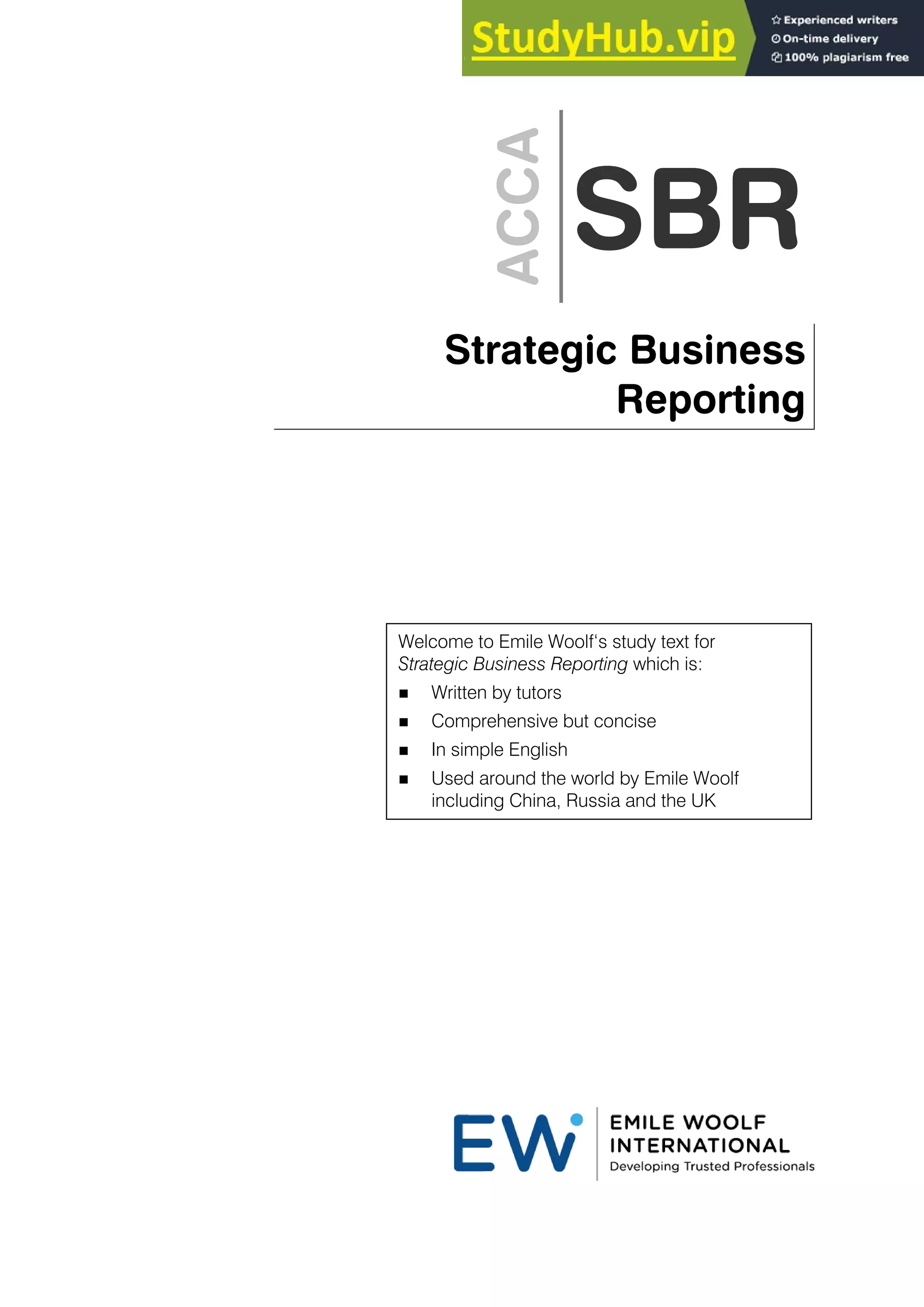






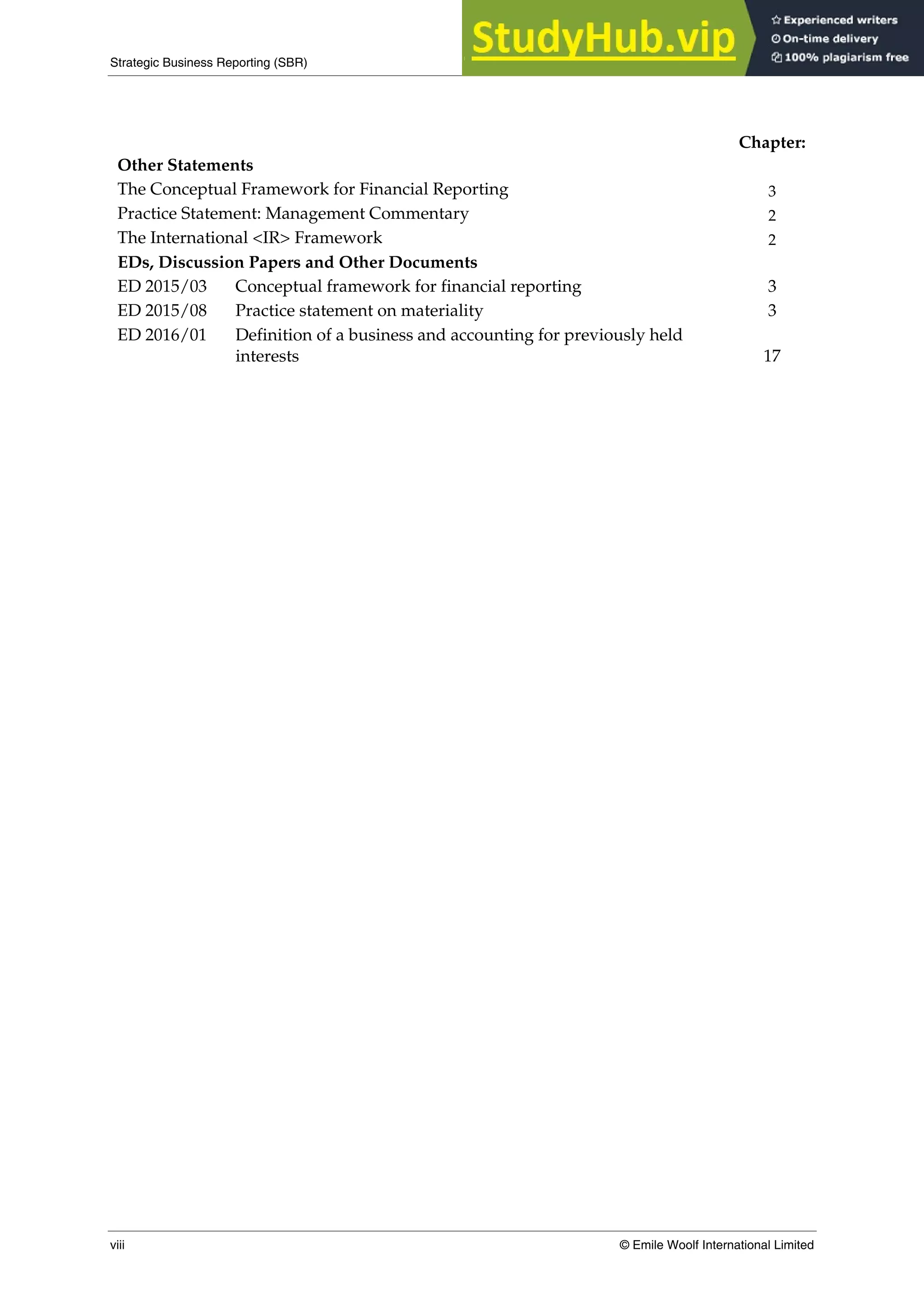






















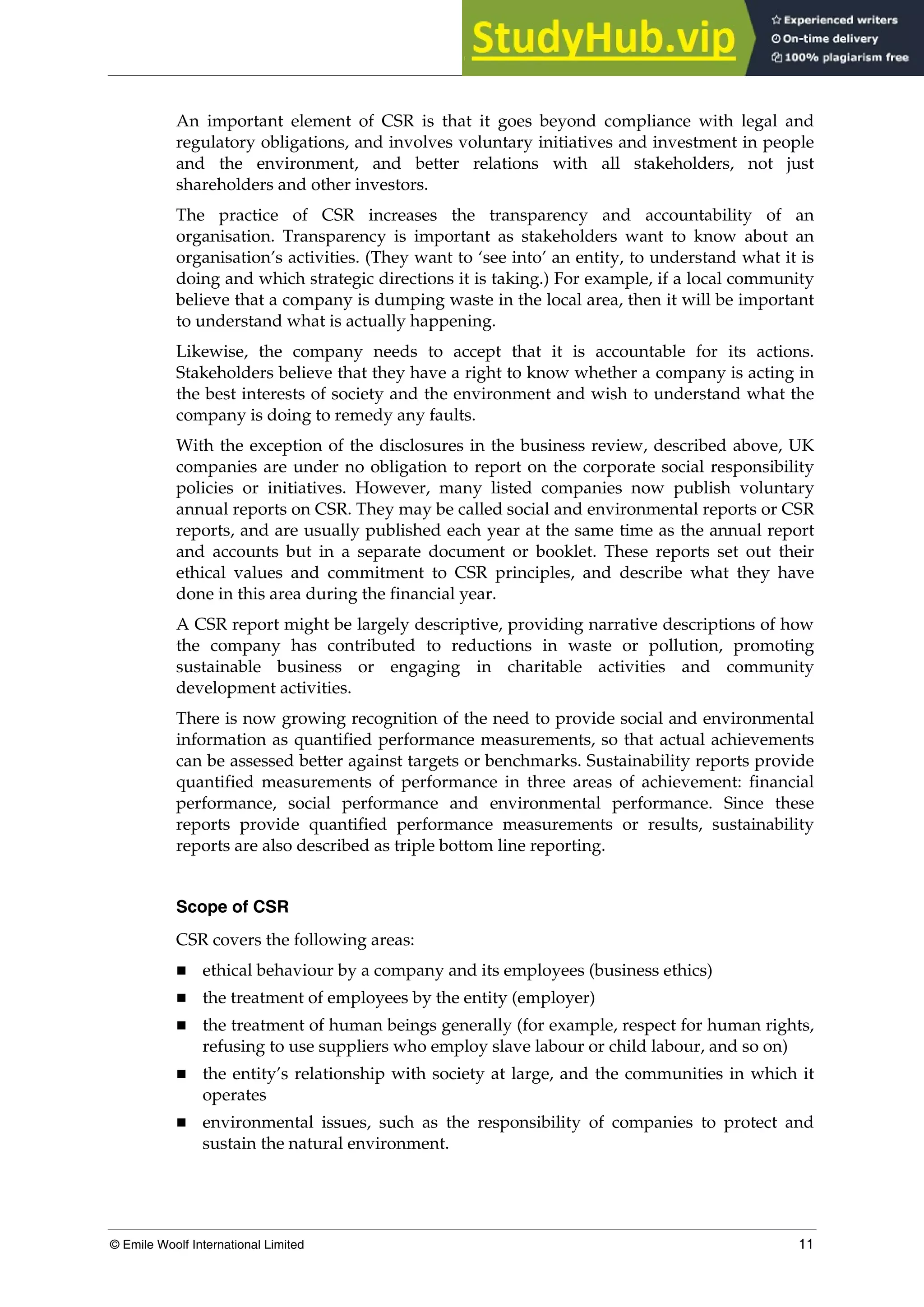









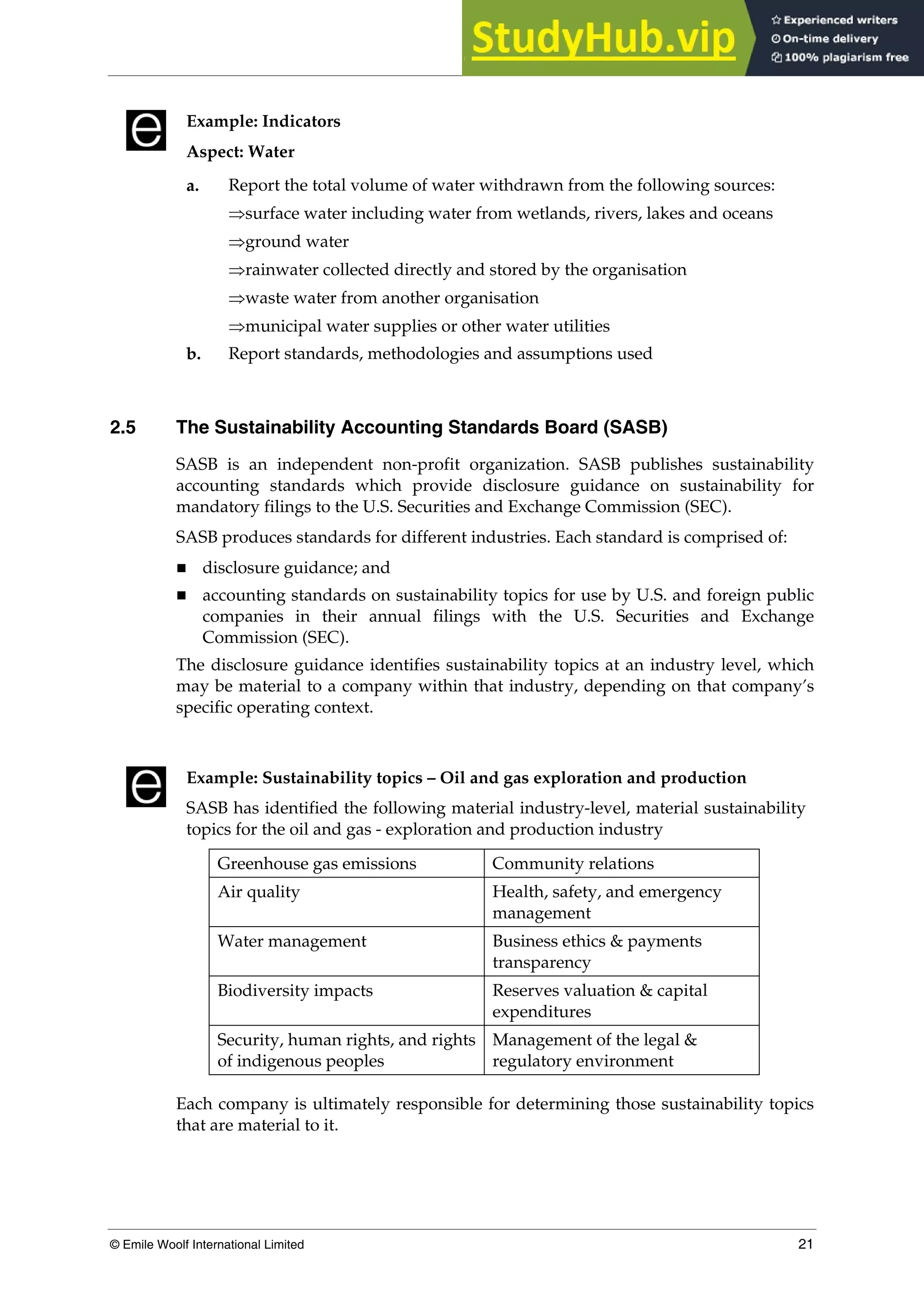



































































![Chapter 4: Reporting financial performance
© Emile Woolf International Limited 89
Earnings are the profit (or loss) after tax from continuing operations that are
attributable to the ordinary equity shareholders. With consolidated accounts,
earnings are the profits after tax from continuing operations that are attributable to
ordinary equity shareholders of the parent company (excluding the profit
attributable to non-controlling interests).
Preference dividends are deducted in arriving at the profit attributable to ordinary
equity shareholders. Preference dividends should normally only be deducted from
profit after tax to calculate a figure for earnings if they have already been declared
by the end of the financial year. This is because the company does not have an
obligation to pay the dividend unless it is declared. However, there is an exception
in the case of dividends on ‘cumulative preference shares’. When a company has
cumulative preference shares, the dividend that should be paid must be deducted
from profit after tax to calculate earnings, even if it has not yet been formally
declared. This is because if no dividend is declared, the entitlement of the
shareholders to their dividend remains. There is an obligation on the company to
pay the dividend, and this carries forward to the next financial year, until the
dividend is eventually paid.
Number of ordinary shares in issue. This is the weighted average number of
ordinary shares during the period. Calculating the number of shares in issue can be
fairly complicated.
When shares are issued during the financial year at a full market price, the number
of shares is a weighted average number of shares in issue during the year. This can
be calculated as follows:
Number of shares at the beginning of the year, plus A
Number of shares issued at full market price during the year
× [Number of months in the year after the share issue /12]
B
Weighted average number of shares in the year A + B
Example
A company issued 20,000 ordinary shares at their market price of $5 per share on 1
July 20X7. Its share capital prior to the issue was 200,000 and its profits after tax
were $50,000 for the year to December 20X6 and $70,000 for the year to 31 December
20X7.
The shares were issued at full market price.
The earnings per share in each year are calculated as follows:
20X6: EPS = $50,000/200,000 shares = $0.25
20X7: Weighted average number of shares = 200,000 + (20,000 × 6/12) = 210,000
EPS = $70,000/210,000 shares = $0.33.](https://image.slidesharecdn.com/accastrategicbusinessreportingstudytext-230807154039-3fc63967/75/ACCA-Strategic-Business-Reporting-Study-Text-pdf-111-2048.jpg)





















































































































































































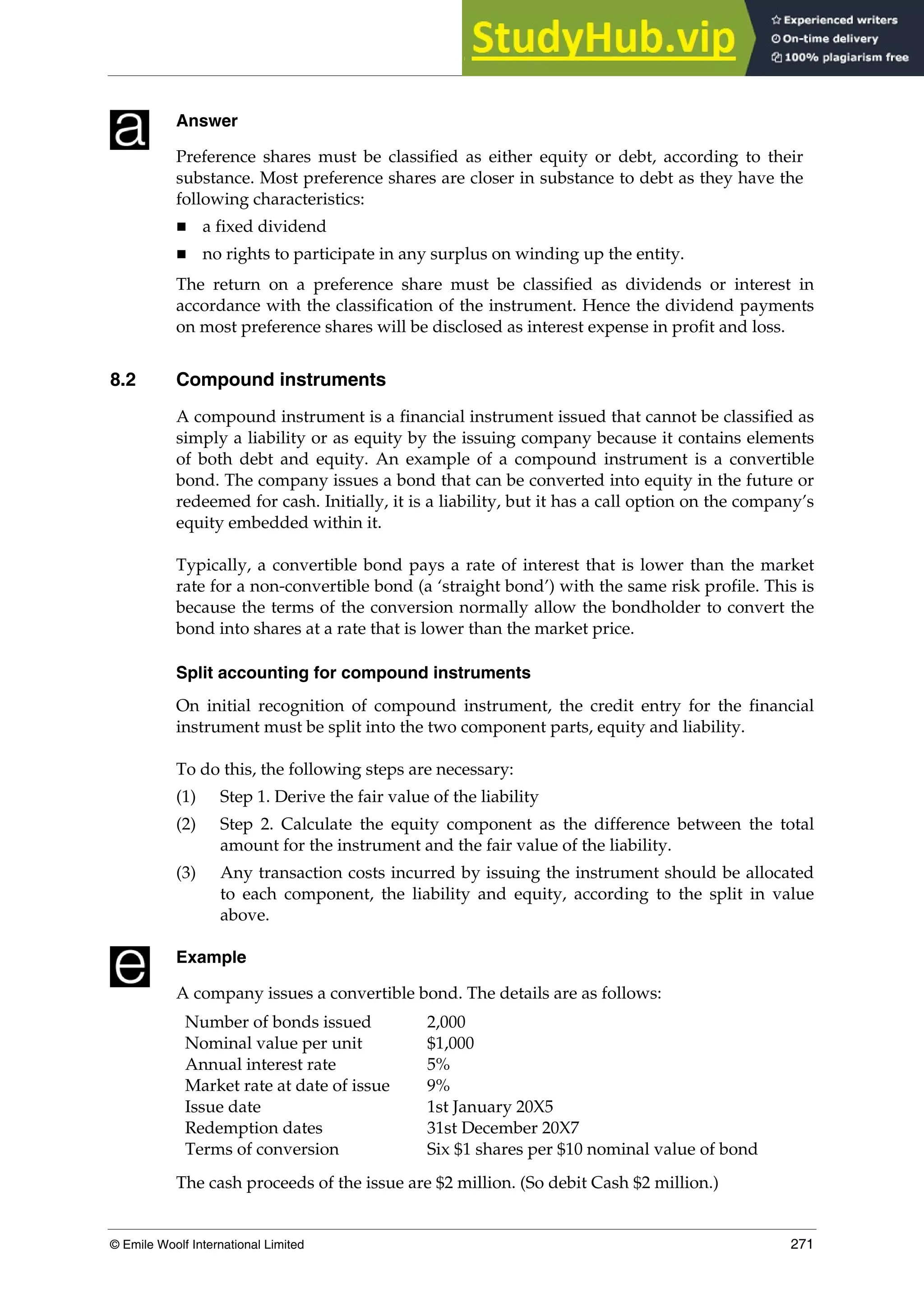















































































































































![Chapter 12: Provisions and events after the reporting date
© Emile Woolf International Limited 415
Answer
If a provision is to be made:
there must be a present obligation as a result of a past event
it must be probable that an outflow of economic benefits will be required to
settle the obligation, and
it must be possible to make a reliable estimate of the amount of the obligation.
Applying this to the facts in the example:
(1) Entity G has a legal obligation under the health and safety legislation. The
obligation has arisen from a past event, which is the accident on 15 December
Year 1.
(2) It is probable that Entity G will have to pay the employee. A ‘60% chance of
success’ means that success is ‘more likely than not’. (A probability above 50%
meets the IAS 37 definition of ‘probable’.)
(3) A reliable estimate can be made. This is $60,000.
Conclusion: A provision of $60,000 should be made at 31 December Year 1.
Example
An entity sells high-definition televisions with a 12-month warranty under which
customers are covered for the cost of repairs or replacement of manufacturing
defects found during the period after purchase. If every product sold required
minor repairs, the annual cost would be $0.5 million. If every product was
replaced, the annual cost would be $3 million.
Based on trading history, it is believed that 80% of all goods sold will have no
defects, 15% will have minor defects and 5% will need replacing.
The warranty period covers just 12 months, and a provision should therefore be
created for the expected value of $225,000 [(80% × $0 nil) + (15% × $0.5 million) +
(5% × $3 million)].
Discounting
Where the provision will not be settled for some years and so the effect of the time
value of money is material, the provision should be measured at its present value.
The discount rate used should be the pre-tax market rate that reflects the risks
specific to the liability.
Reimbursements
Where some or all of the costs to settle the provision will be reimbursed by another
party, the reimbursement should only be recognised when it is virtually certain that
the reimbursement will be received.](https://image.slidesharecdn.com/accastrategicbusinessreportingstudytext-230807154039-3fc63967/75/ACCA-Strategic-Business-Reporting-Study-Text-pdf-437-2048.jpg)


































































































![Strategic Business Reporting (SBR)
514 © Emile Woolf International Limited
In the year to 31 December Year 6, Entity P sold $200,000 of goods to Entity A, and
the mark-up was 100% on cost. Of these goods, $30,000 were still held as inventory
by Entity A at the year-end.
Required
What is the necessary adjustment for unrealised profit?
Answer
The unrealised profit on this inventory is $30,000 × (100/200) = $15,000.
Entity P’s share of this unrealised profit is (40%) $6,000.
The double entry is:
Dr Cost of sales 6,000
Cr Investment in associate 6,000
The investment in the associate (or JV) at 31 December Year 6 is as follows:
$
Cost of the investment 205,000
Entity P’s share of post-acquisition profits of Entity A
[$90,000 + (40% × $50,000)] 110,000
Minus: Entity P’s share of unrealised profit in inventory (6,000)
–––––––––––––––––––
309,000
–––––––––––––––––––](https://image.slidesharecdn.com/accastrategicbusinessreportingstudytext-230807154039-3fc63967/75/ACCA-Strategic-Business-Reporting-Study-Text-pdf-536-2048.jpg)

































































































































































































































































































































